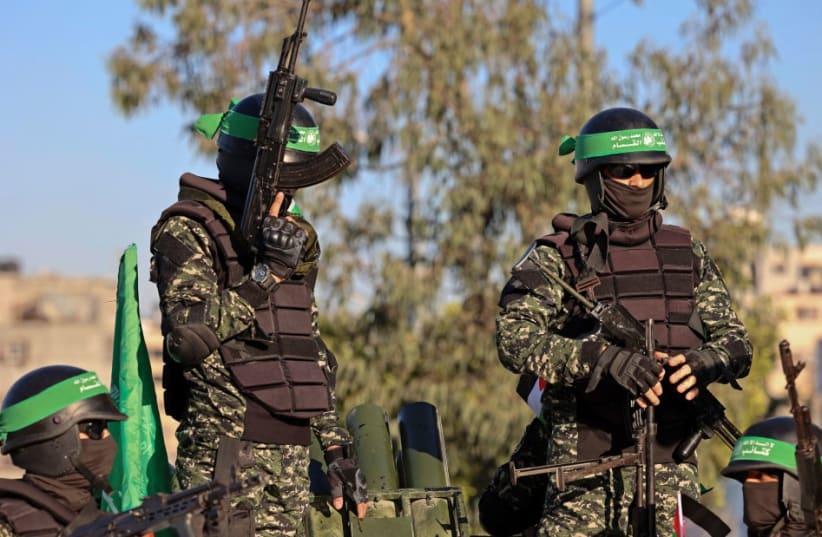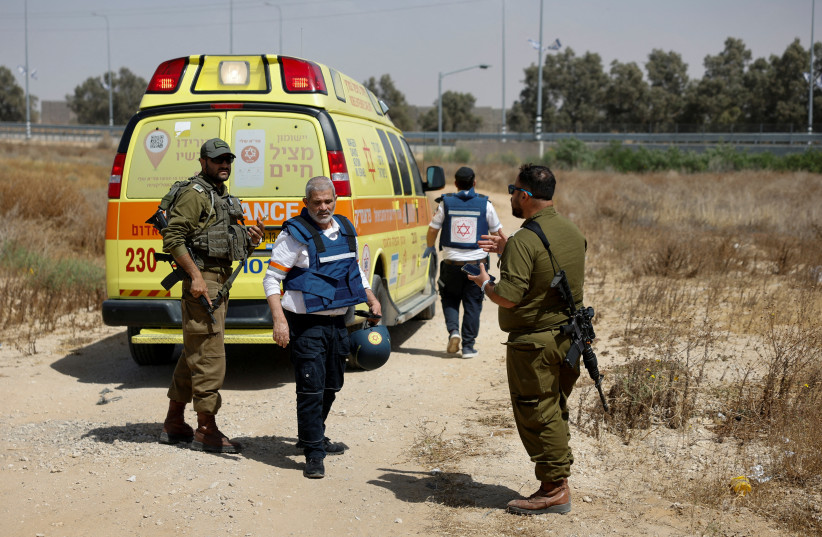As Israel signals its intention to begin a limited operation in eastern Rafah, Hamas is weighing its next moves. On Sunday, the terrorist group carried out an attack at Kerem Shalom that targeted IDF soldiers.The attack was carried out with 114-mm. rockets, Hamas said in a statement. Therefore, it is very aware that the attack could provoke an Israeli response.Hamas knows that Israel has withdrawn from most of Gaza, meaning that the terrorist group has achieved many of its war aims – basically getting an Israeli withdrawal from most areas and a kind of de facto ceasefire in some areas.
Therefore, Hamas was gambling on Sunday with its attack, even as it had put out messaging about its “flexibility” in the ongoing ceasefire and hostage talks. Hamas has generally believed it is kind of “playing” Israel in this respect.Impatiently awaiting the IDF's response
Its backers in Doha and Ankara give Hamas the cover to feel it is winning. This is because military pressure on Hamas generally ended in March. Initially, Israel waged a campaign that had brought pressure on the terrorist group, and Hamas was surprised by Israel’s response and that the international community was not able to prevent the war from continuing.
But Hamas regrouped quickly in northern Gaza in February and March. It also has regrouped in other areas. It has reestablished some capabilities to fire rockets, often working with other terrorist groups in Gaza.This is not to say it has the extensive capabilities to manufacture long-range rockets and fire large barrages.However, its use of the 114-mm. rocket, which has a relatively short range, refers to its continued capability to position its munitions and projectiles around Gaza. It has also used these munitions to target the Netzarim corridor in central Gaza.Hamas is likely looking closely at the IDF response. A limited and gradual incursion into an area along the border will leave Hamas intact in Rafah and enable it to move its battalions back to Khan Yunis. One area of Khan Yunis, the western side of Salah al-Din Road, is now part of the “humanitarian area,” and Hamas can likely shift forces up this road, which is the main north-south road in Gaza.Hamas leaders are more familiar and comfortable with Khan Yunis as a base of operations. Yahya Sinwar is from there. Also, it gives them easy access to the “central camps” area of Gaza, such as Deir el-Balah, El-Bureij, Maghazi, and Nuseirat. These areas have largely been left untouched by the IDF, similar to Rafah.Hamas enjoys the continued control of humanitarian routes in these areas as well, giving it a unique control over much of Gaza seven months into the war. Hamas also uses the central camps as a staging area to attack the Netzarim corridor. The corridor is the one area still controlled by the IDF.Hamas has shown in other places that it refuses to stand and fight. It disperses its battalions and turns them into small squads of just a few men. It then seeks to survive what it expects to be an IDF onslaught and then return to control areas, using men in civilian clothes. It stashes weapons that its men can easily access later.This is how Hamas is similar to a cartel or drug gang, keeping weapons in safe houses and other locations but behaving like civilians by day. This is how Hamas built itself up from a gang in the 1980s to control Gaza in 2007.Hamas knows this method as a tactic, and it is used to Israeli campaigns that use limited and gradual incursions. Hamas easily survived by using this same tactic during the ground wars in 2009 and 2014, and it is ready for another round.If the Rafah offensive does not take into account Hamas tactics and only focuses on “terrorist infrastructure,” then Hamas is likely to come out mostly unscathed again or simply decamp and move back to Khan Yunis or the central camps.

